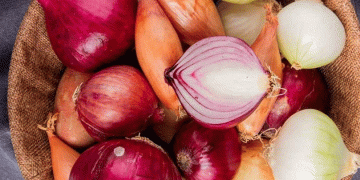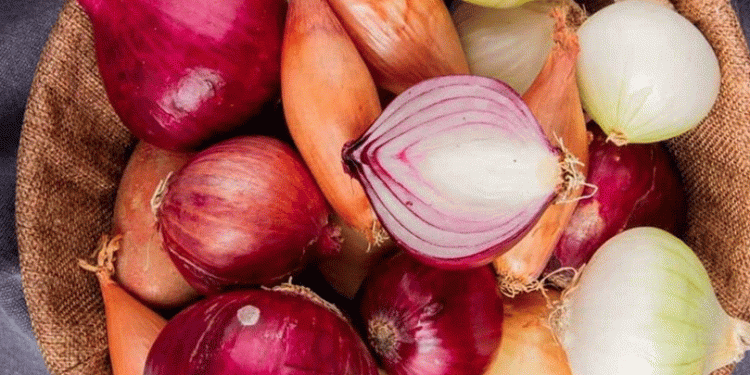Onions, a staple in Indian kitchens, have turned into a luxury item as prices hit record highs. This year’s steep price surge has brought challenges for consumers, traders, and farmers alike. With wholesale prices at Lasalgaon, India’s largest onion market, reaching a five-year high of ₹5,656 per quintal, the nation is grappling with the impact of weather-related disruptions and supply shortages.
Understanding the Price Surge
Current Price Trends
- Retail Prices: Onions are selling for ₹70-₹90 per kilogram in Kolkata, with some regions reporting rates as high as ₹100/kg.
- Wholesale Rates: At Lasalgaon, wholesale prices have surged by over 50% in just a few weeks, reflecting a national trend.
Key Reasons for the Hike
- Weather Disruptions:
Heavy rainfall in central India, particularly in Maharashtra, damaged a significant portion of the onion crop. - Storage Shortages:
The stored rabi crop, which usually buffers supply until fresh arrivals, was depleted by March 2024, leaving a gap in availability. - Reduced Harvest Area:
Many farmers shifted to other crops due to low onion prices earlier in the year, leading to reduced acreage under onion cultivation.
Maharashtra: The Epicenter of Onion Production
Maharashtra, India’s largest onion producer, contributes 43% of the national output. However, even this leading state has been unable to meet demand due to:
- Delayed Harvests: Heavy rains delayed the arrival of fresh kharif onions.
- Labor Shortages: Challenges in transportation and storage have added to supply constraints.
Impact on Farmers and Consumers
Farmers:
- While high prices offer the potential for better profits, many farmers face losses due to damaged crops and increased storage costs.
- Market volatility has left smallholder farmers unable to predict or plan their production effectively.
Consumers:
- Middle- and lower-income households are hardest hit by soaring onion prices, forcing many to reduce their consumption.
- The ripple effect has led to increased costs for restaurants and food vendors, impacting broader economic activity.
Possible Solutions
Short-Term Measures:
- Importing Onions:
The government has initiated onion imports to ease domestic shortages and stabilize prices. - Buffer Stocks:
Releasing onions from government reserves can help bridge supply gaps temporarily.
Long-Term Strategies:
- Infrastructure Development:
Investments in cold storage and transportation infrastructure can reduce post-harvest losses and ensure year-round availability. - Weather-Resilient Varieties:
Developing onion varieties that can withstand erratic weather conditions is crucial. - Crop Diversification Incentives:
Encouraging farmers to maintain a balanced focus on onions and other crops can help avoid future supply shortages.
The onion price crisis highlights the vulnerabilities in India’s agricultural supply chain. While immediate measures like imports and buffer stock releases may provide temporary relief, long-term solutions are essential to mitigate the impact of weather disruptions and ensure stable prices. By addressing the structural challenges in storage, transportation, and crop planning, India can protect both farmers’ livelihoods and consumers’ access to this essential commodity.































